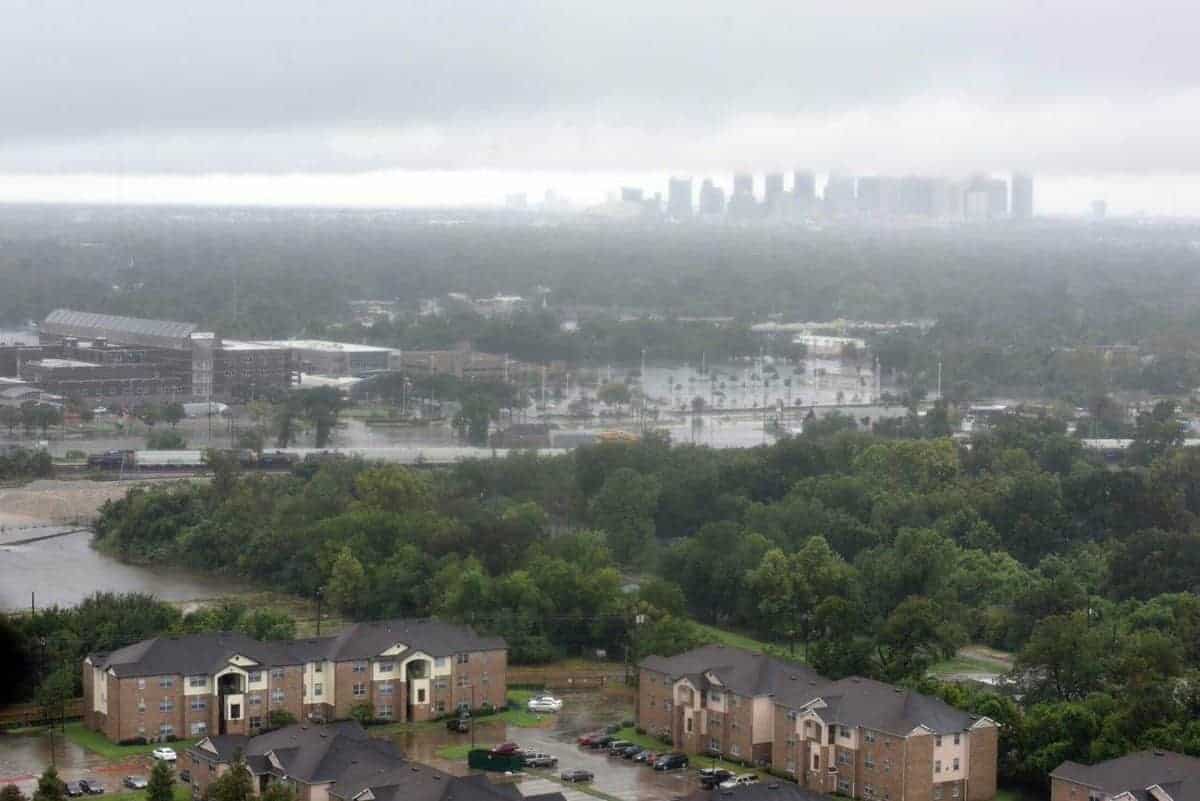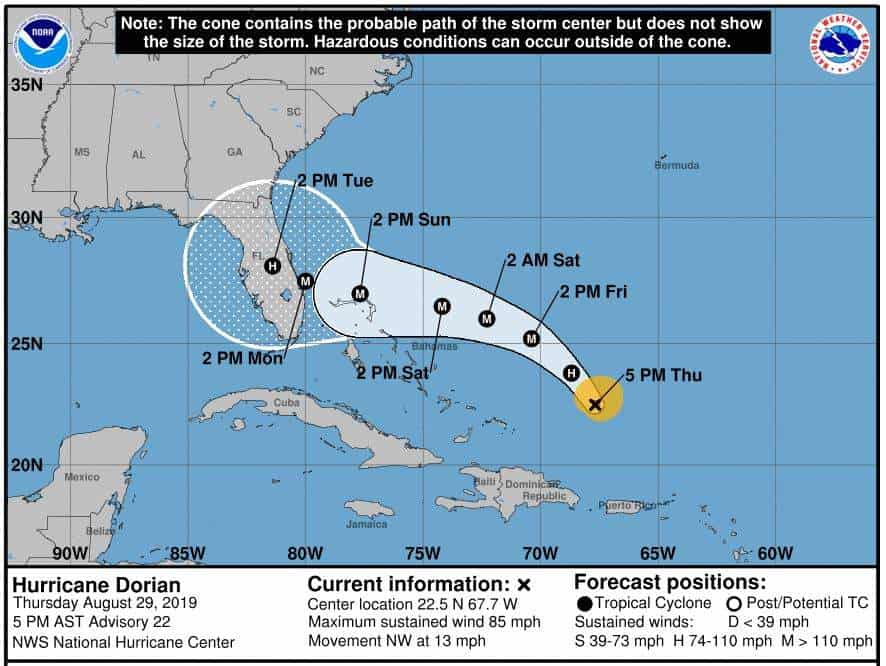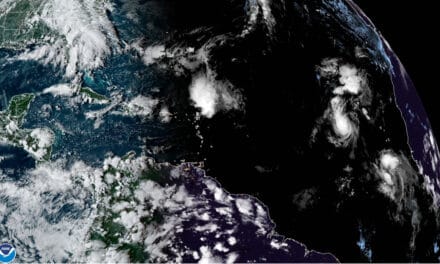Harvey, now a tropical storm, remains a threat to life and property.
- Stay informed on the storm’s position and track at the National Hurricane Center Atlantic Ops.
- Only call 911 if you need immediate medical attention or need rescue from a life-threatening situation.
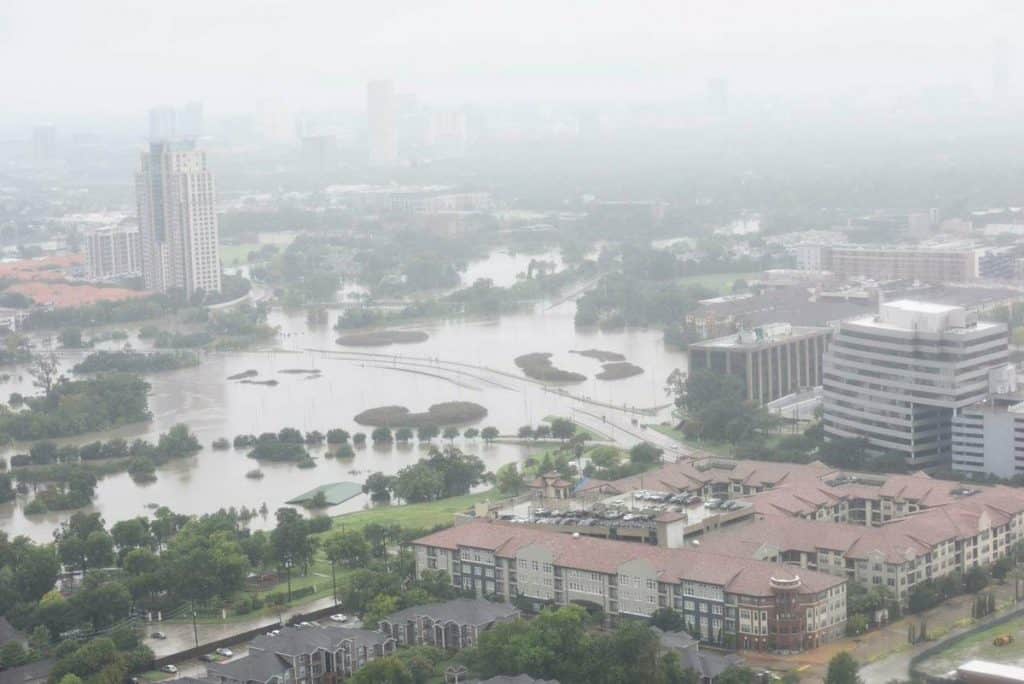
Arial Photo from the US Coast Guard of the Houston Flooding. Note rain band covering the downtown area.
Latest News
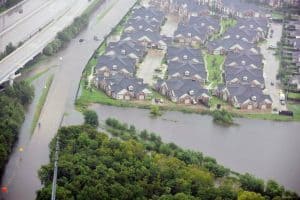
Houston as seen by the United States Coast Guard during search and rescue operations. Roadways and neighborhoods are flooded making travel impossible.
According the NHC, “Ongoing catastrophic and life-threatening flooding will continue across southeastern Texas with additional rainfall accumulations of 15 to 25 inches…” and “The flood threat is spreading further east into southwestern Louisiana” Additional rainfall amounts of 15 to 25 inches are expected there. Total rainfall amounts may reach or exceed 50 inches in some places.
President Donald J. Trump Declared a Major Disaster for Texas. The Federal Government and FEMA were in Texas before the storm and will continue to provide assistance throughout this catastrophic disaster. Local citizens with boats and high-water vehicles are being asked to coordinate with local rescue efforts. All rescue vehicles should be equipped with life jackets and boat operators certified.
Governor Gregg Abbot has activated all available National Guard—approximately 12,000 members—throughout Houston, Corpus Christi, and Victoria and the surrounding region to assist with rescue and relief efforts.
Basic After-the-Storm Tips
- Local officials have the latest information. Follow their advice and instructions and listen for updates and information.
- Check in with Family and friends by text message or social media. Text messages are usually more reliable than voice calls.
- Watch for downed power lines.
- Photograph property for insurance claims.
- Take steps to prevent further property damage such as covering a damaged roof with a tarp. Your insurance company may not cover damage you could have prevented by taking action.
- Tornadoes are still a possibility. Take shelter during a warning by going to the center of a small interior room on the lowest level of a sturdy building. Closets and hallways are good options.
- Move to higher ground during flash flood warnings. In your home, do not seek safety in an attic without a means to escape through the roof. Take an axe to break a hole in the roof is the attic is your last resort.
Flood Survival
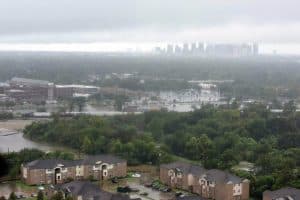
Rainfall exceeding 30 inches in some place has overwhelmed the storm system. Dangerous and Life-Threatening flooding continues throughout Houston.
If flood waters are entering your home, move to the highest level with windows. Take your supplies with you.
Do not try to escape refuge in the attic. Rescuers cannot see you and if the water rises to the ceiling below, you will become trapped. Move to the roof instead. Don’t enter an attic without the means to chop or cut your way onto the roof.
Do not attempt to travel in flooded areas:
- Avoid walking or driving through flooded areas.
- Turn around. Don’t drown. Do not attempt to drive on a flooded roadway. It takes very little fast-moving water to sweep a vehicle away. Do not drive on bridges over fast-moving flood waters – the bridge structure may be compromised.
- Six inches of moving water can knock you over. It only takes a foot of water to carry your vehicle away.
- Move to higher ground during flash-flood warnings.
- Leave a flooded car if the water is not moving and get to higher ground. Do not leave a car to enter moving water.
After the flood:
- Only return home when authorities permit.
- Photograph property damage.
- Standing water may have electrocution hazards.
- Never drive through flooded areas.
- Floods can erode roads and bridges. Use caution.
- Water on a road may hide washouts and sinkholes.
Emergency Rescue Efforts and First Responders

The United States Coast Guard performs a helicopter rescue of a family.
Pilots reports drones flown by insurance companies, news media, journalists, and local citizens capturing images and video of the flooding are interfering with rescue efforts. Pilots have reported dangerous encounters with drones. The FAA has now issued a ban on drones throughout the disaster area.
911 Call Centers are swamped with calls. Only call 911 if you need immediate medical attention or rescue from a life-threatening condition.
The Houston Coast Guard Command Center of the also takes assistance calls:
- 281-464-4851
- 281-464-4852
- 281-464-4853
- 281-464-4854
- 282-464-4855
Rumors have spread that ICE officials are arresting immigrants seeking safety. This is untrue. Undocumented Immigrants may seek safety and aid at shelters without worrying about immigration officials. ICE is not conducting enforcement at shelters, food banks, or relief stations. If you need help, medical attention, or rescue, do not be afraid to call for help.
Beware of scam artists posing as government officials, charities, insurance companies, and assistance workers.
- Ask for ID. Don’t be afraid to hang up on cold callers.
- Contact government agencies using numbers from official sources such as agency websites.
- Don’t sign anything you don’t understand or open contracts with blank spaces.
Staying Safe in Ongoing Catastrophe
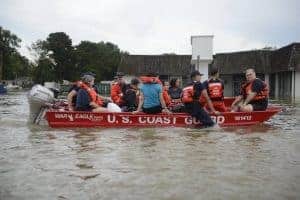
A United States Coast Guard Rescue Boat and Crew Evacuate Harvey Victims to Safety.
Do not rely on municipal water supplies for drinking. A boil order is in effect anywhere that flood waters have occurred. Water must be boiled before drinking or using it to brush your teeth or washing dishes.
Chemical contamination is another water problem. Flood waters contain raw sewage along with a mix of petroleum products and other chemicals. Do not allow children to play in flood waters and do not use the water for drinking or any other personal use.
Fuel supplies are scarce or nonexistent. Use portable generators sparingly to conserve fuel. As long as fuel was not contaminated with water, it is probably okay to use.
Do not operate generators in standing water. Elevate portable generators off the ground. Keep extension cords out of standing water.
Don’t try to use standby generators that were flooded. Even they are able to start, a flooded generator requires service before use or unrepairable damage may occur.
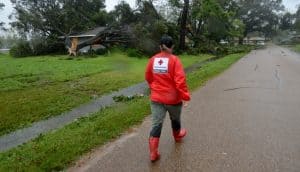
A Red Cross Aid Worker Searches Approaches a Damaged Home After Hurricane Harvey
Shelter in place.
- Select a small, interior room for your shelter. Move your emergency supply kit to the room.
- Move your children and pets to the shelter room—close doors to keep them there.
- Keep your television and radio turned to news for information.
- Use cell phones sparingly to conserve battery power. Keep them charged as long as possible.
- If the roof is compromised and leaking, use plastic sheeting to create a dry place for sleeping and living.
- Substitute 5-gallon buckets with trash bags and lids for toilets if they are not working.
- Don’t consume food that was exposed to flood waters.
- Follow local official websites for information and updates.
- Use your emergency supplies.
- Stay in touch with neighbors nearby. They may need your help—you may need their help.
American Red Cross – Shelter in Place Information
If you need Rescue
- Call 911 or the Coast Guard.
- Be as precise as possible about your location as possible. Street numbers, cross streets, town, neighborhood, anything that might help responders get to you.
- Make yourself visible to rescuers. Wave a flag or towel. Get on the roof or above water.
Important Links and Information
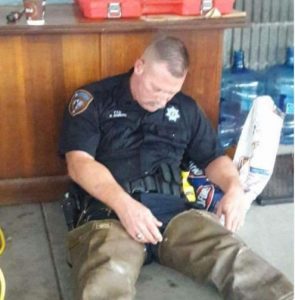
An Exhausted Deputy takes a break after working through the night to rescue people.
These Links are to official government website and social media accounts. Your local government website may more specific information to keep you updated. Visit these pages and bookmark them on your cell phone or tablet. Stay current on news and information.
Visit hurricanes.gov for the latest storm information.
The FEMA social hub has updates from official social media accounts.
The Free FEMA APP provides NWS Alerts, Safety and Survival Tips, Emergency Checklist Information, Local Shelter Locations, and accepts photos to assist first responders.
Need Financial Assistance? DisasterAssistance.gov
Official State of Texas Government Website
Official State of Louisiana Government Website
National Flood Insurance Program (NFIP)
- How to File a Claim
- Infographic
Follow on Twitter
- Ready
- FEMA Region 6 – Texas, OK, LA, NM
- FEMA
- FEMAespanol
Like on Facebook

